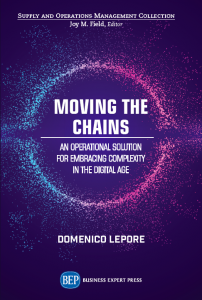
What is a project? It’s a word that everyone is familiar with but it can mean very different things to different people. This can lead not just to misunderstandings but to intrinsic unreliability in delivery. In other words, far too many projects in the world get delivered “sooner or later” with all the knock-on negative implications. So what do we mean when we say the word project? We need an operational definition.
Simple projects
There are some projects that an individual can carry out mainly by themselves, such as writing a book. In this case, it is simply a matter of the person organizing themselves to complete all the stages that writing a book requires. There can be a self-imposed deadline but not necessarily a hard delivery date. Once the manuscript is complete, then the author will have to interact in a timely manner with a publisher.
Complex projects
Any time a project requires several people (or entities) to interact towards a goal within a given timeframe and budget, then we move into the realm of complexity. The majority of projects that are carried out in organizations fall into this category, What do we mean by complexity? A situation characterized by interconnections and interdependencies that renders linear thinking and actions inadequate. A complex project is a network of interdependencies created to achieve a precise goal in a well-defined time frame.
How do we manage a complex project?
There are a multitude of techniques in the world for managing projects, many with levels of certification. However, most Project Management techniques do not take complexity into account operationally. Indeed, the majority of projects are delivered late and over budget, with implications for all the stakeholders. So how can we manage a complex project effectively?
Just this week, someone in the hospitality industry with no official Project Management training told us that when she organizes projects she starts by thinking about when the project needs to be delivered and schedules backwards to figure out how to satisfy that deadline. To some this may seem logical, but it’s not the way, for example, Microsoft Project prompts you to work (although there is an option for it).
Guess what – resources are finite
One of the most important contributions to Project Management has been made by Israeli physicist Dr. Eliyahu Goldratt who developed the Theory of Constraints. From his understanding that projects are complex systems, he developed a revolutionary approach to Project Management called Critical Chain that is so effective it is relied upon by organizations in the military and aerospace sectors.
It was clear to Goldratt that projects can only be punctual if we take into account that project resources are finite. Once again, this may seem obvious to many but it is ignored in most Project Management approaches. Goldratt also realized that when we understand that a project is a system, it naturally has a constraint. The constraint is the element in a system that dictates the pace with which the system can deliver units of the goal. The “constraint” of a project is its duration. Three elements contribute toward this: the way we estimate task duration, the time dependence of the tasks (the logical sequence of what has to happen before and after any task) and, of course, how feasible it is for that sequence to exist, meaning, how realistic it is for that sequence to be followed. In other words, resource availability. Once these three factors have been taken into consideration we derive what Dr. Goldratt calls “the Critical Chain” of the project: the longest chain of dependent events that takes into account the availability of resources.
Thanks to his fundamental analysis of what a project is and what determines its length in the real world, Goldratt was able to develop an entire methodology for scheduling and synchronizing resources in a project to achieve reliable completion on time and within budget. We have written about Critical Chain extensively in our books. Well beyond a technique, it ushers in a systemic understanding of how organizations can function better in our age of complexity.
So whatever methodology you may choose to manage your projects, unless you take into account the basic elements that determine project completion, namely realistic task duration, time dependence of tasks and real resource availability, your completion date may well be “sooner or later”.
(The restaurant in the image is in fact now open in Victoria, BC, Canada!)






Leave a Reply